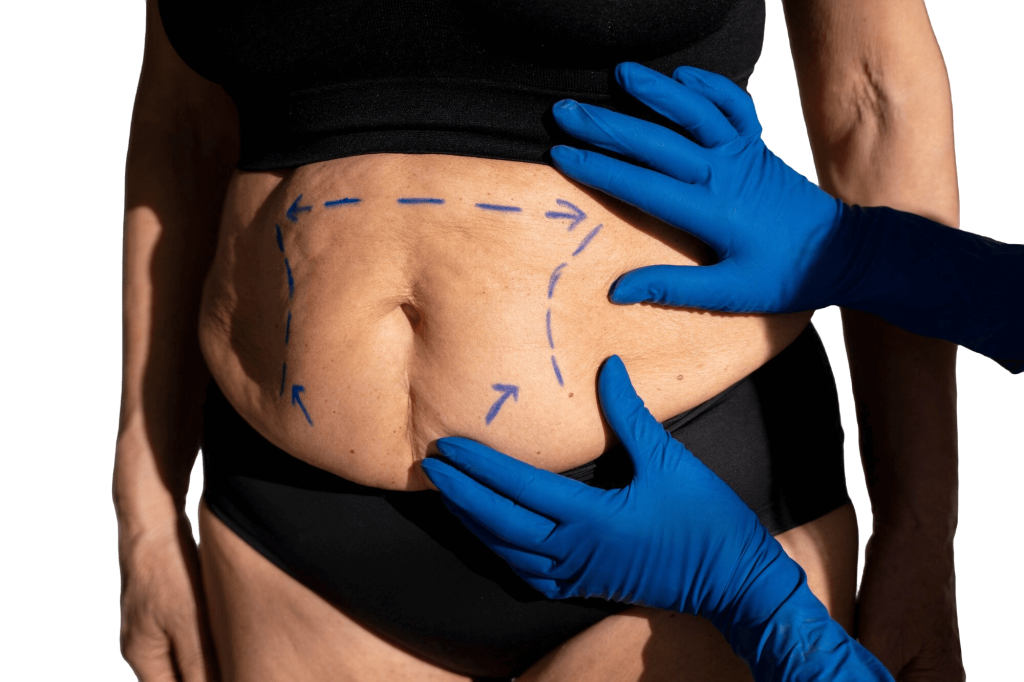abdominoplasty

abdominoplasty
What is Abdominoplasty?
Abdominoplasty is a surgical procedure that focuses on removing excess skin and fat from the abdominal area while tightening the underlying muscles. The result is a flatter, more toned abdomen and improved body contour. This procedure is particularly beneficial for individuals who have experienced significant weight loss, pregnancy, or aging-related changes that have left them with loose or sagging abdominal skin.
Good Candidate for Abdominoplasty
- Have Excess Abdominal Skin: Those with loose or sagging skin around the abdomen, often due to weight loss or pregnancy.
- Experience Abdominal Muscle Separation: Individuals with separated abdominal muscles (diastasis recti) that have not improved with exercise.
- Have Stable Body Weight: Candidates should be at or near their ideal weight, as significant weight fluctuations can affect the results.
- Are Non-Smokers: Smoking can impair healing, so non-smokers or those willing to quit before surgery are preferred.
How Does Abdominoplasty Help?
Abdominoplasty, commonly known as a tummy tuck, is a surgical procedure designed to address various concerns related to the abdomen. Whether you’re dealing with excess skin, weakened muscles, or a desire for a more sculpted midsection, abdominoplasty offers a range of benefits. Here’s a detailed look at how abdominoplasty can help enhance your body and overall well-being.
Tightens Muscles
Removes Excess Skin
Improves Body Contour
Improves Posture
Boosts Confidence
The Abdominoplasty Procedure
1.Consultation:
- Preoperative Assessment: During the initial consultation, your plastic surgeon will assess your overall health, discuss your goals, and determine if abdominoplasty is the right procedure for you. They will explain the surgical options, techniques, and expected outcomes.
2. Surgical Preparation:
- Pre-Surgery Instructions: You will receive specific instructions on how to prepare for surgery, including any necessary medical evaluations, lifestyle changes, and dietary adjustments.
3. The Surgery:
- Anesthesia: Abdominoplasty is typically performed under general anesthesia, ensuring you are comfortable and pain-free during the procedure.
- Incision: The surgeon makes an incision along the lower abdomen, usually within the bikini line, to minimize visible scarring.
- Removal of Excess Tissue: Excess skin and fat are removed, and abdominal muscles are tightened. Liposuction is done to contour the area further.
- Umblicus Repositioning: The belly button (umblicus) is repositioned to a superior position to restore its youthfullness
- Repositioning and Closure: The remaining skin is stretched over the newly contoured area, and the incision is closed with sutures.
4. Postoperative Care:
- Recovery Instructions: You will receive detailed postoperative care instructions, including how to manage pain, care for incisions, and avoid certain activities. Regular activities are gradually resumed and the recovery keeps improving over weeks post surgery. Heavy exertional activity is avoided for atleast 6-8 weeks
- Follow-Up Appointments: Regular follow-up visits with your surgeon are crucial to monitor your healing progress and address any concerns.


